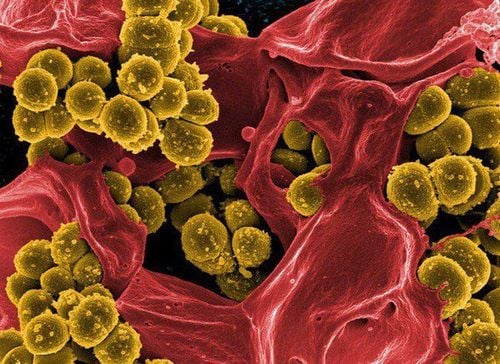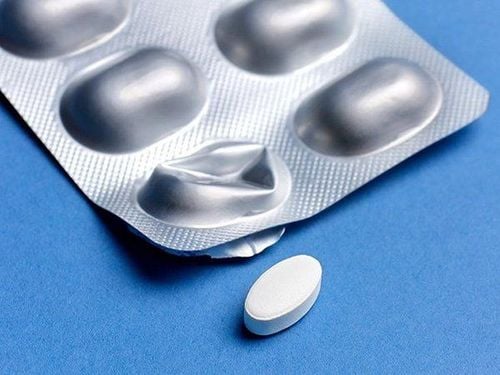This is an automatically translated article.
This article is professionally consulted by Master, Doctor Nguyen Le Duc Hoang - Emergency Medicine Doctor - Emergency Department - Vinmec Danang International Hospital.There are many different reasons why the body goes into shock. Let's learn about toxic shock syndrome and its symptoms through the article below.
1. What is Toxic Shock Syndrome?
Toxic shock syndrome is a syndrome that occurs suddenly and carries a risk of death for the sufferer. Toxic shock syndrome is caused by the release of toxins from staphylococcus aureus - a type of bacteria that grows and overgrow.
Toxic shock syndrome affects women who are still menstruating, especially those using super absorbent tampons, as well as those using sponges, diaphragms or cervical caps bow .
When toxic shock syndrome occurs, the body will suddenly drop blood pressure, leading to severe anemia in the organs, thereby threatening death. Get medical help promptly.
The direct cause of death in toxic shock syndrome is the body's response to the toxins secreted by Staphylococcus aureus. The majority of cases will shock, hypotension, circulatory and respiratory arrest.

2. Manifestations suggestive of toxic shock syndrome
More than a third of all toxic shock syndrome cases involve women under the age of 19, and up to 30% of women who have experienced toxic shock syndrome will experience it again. If you have ever had toxic shock syndrome, pay attention to the symptoms so that you can seek immediate medical attention.
If you are a woman in your menstrual cycle and have symptoms such as high fever and vomiting, especially while using tampons, seek medical attention immediately. Note that if you are using tampons, sponges, diaphragms or cervical caps when you have symptoms, throw them away immediately, before even contacting your doctor or going to the doctor.

3. Causes of Toxic Shock Syndrome
Toxic shock syndrome caused by the toxin secreted by Staphylococcus aureus. Staphylococcus aureus is a common bacteria in burn patients or those undergoing surgery.
Normally staphylococcus aureus is present in the vagina and is harmless, but why staph causes toxic shock syndrome is not clear. However, in order for toxic shock syndrome to appear, two necessary conditions are needed: One is that Staphylococcus aureus needs suitable growth conditions to reproduce and release toxins, the other is that the toxin must be able to enter the bloodstream.
Blood-soaked tampons are an ideal environment for Staphylococcus aureus to thrive. The material that makes up the tampon is also a matter of concern, because polyester foam (polyester foam) will create a better environment for Staphylococcus aureus than cotton or rayon fibers.
In the case of using a sponge, diaphragm or cervical cap, these devices need to stay in the vagina long enough (more than 30 hours), or there is a sponge left in the vagina after use .
Staphylococcal toxin entering the bloodstream related to tampon use. The process of inserting tampons into the vagina can cause very small scratches in the vaginal wall. Super absorbent tampons, especially when used for too long, or used during periods of low bleeding, can dry out the vagina and increase the likelihood of scratches.
The study results excluded genital deodorant sprays and douches, underwear and clothing as the cause of toxic shock syndrome. Toxic shock syndrome was also not associated with menstrual history, history of alcohol or drug use, smoking, water-related activities such as bathing or swimming, and activities related to toxic shock. regarding sex.
Please dial HOTLINE for more information or register for an appointment HERE. Download MyVinmec app to make appointments faster and to manage your bookings easily.
Reference source: webmd.com













